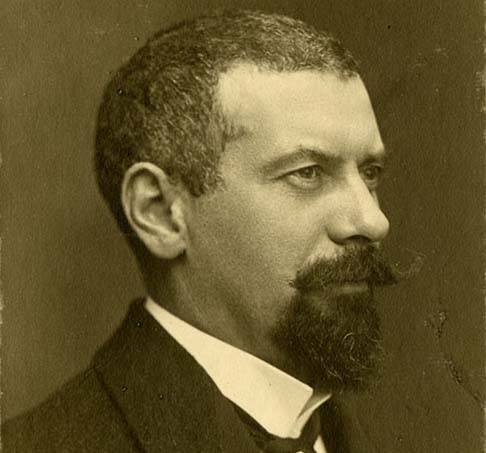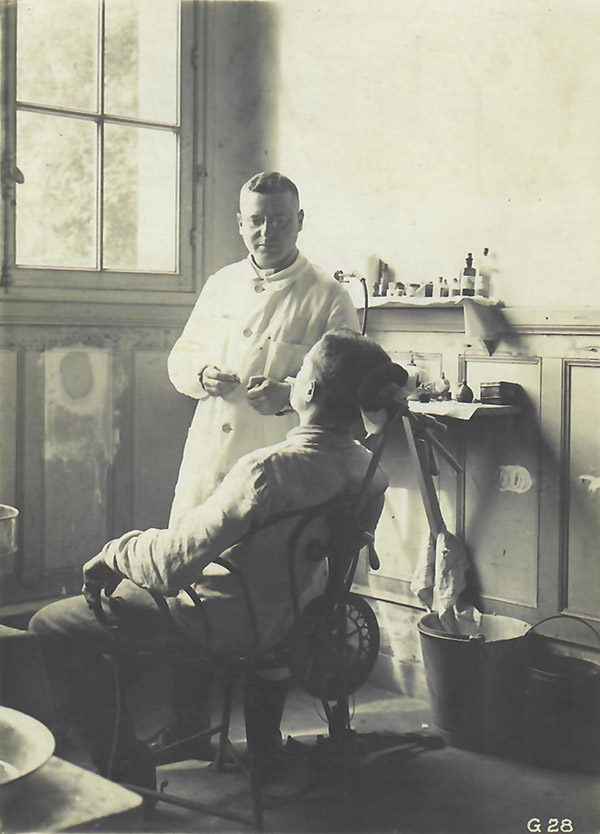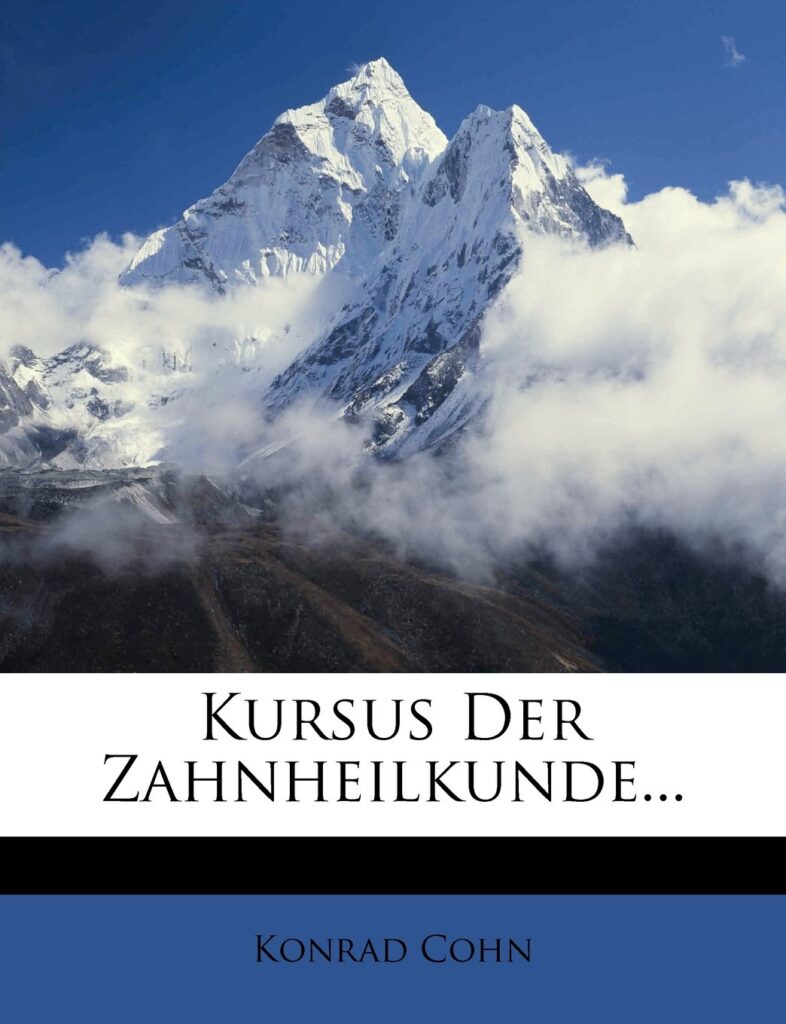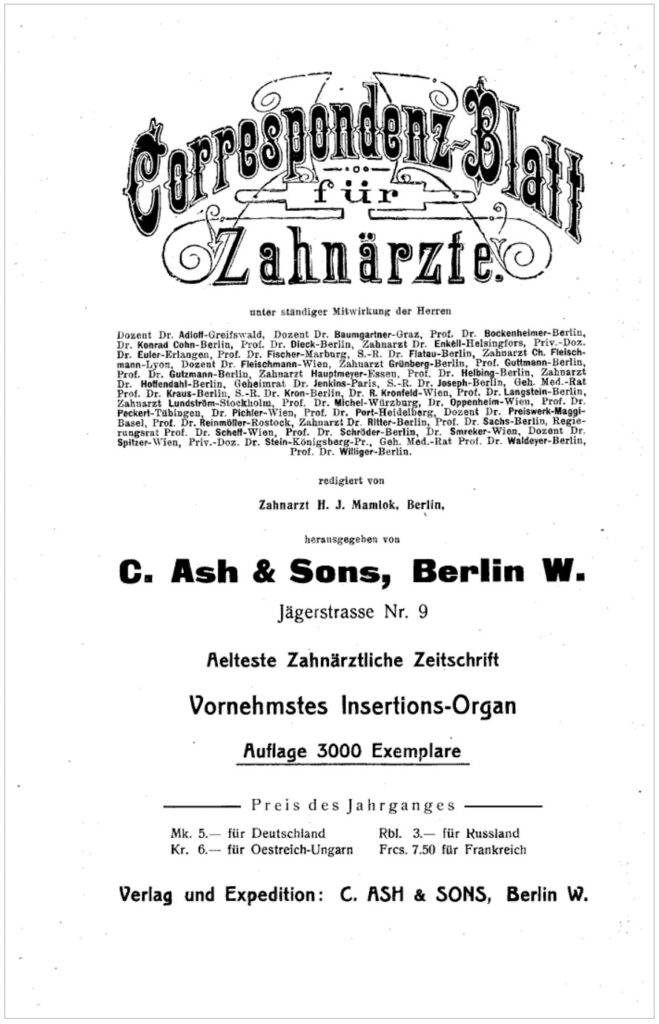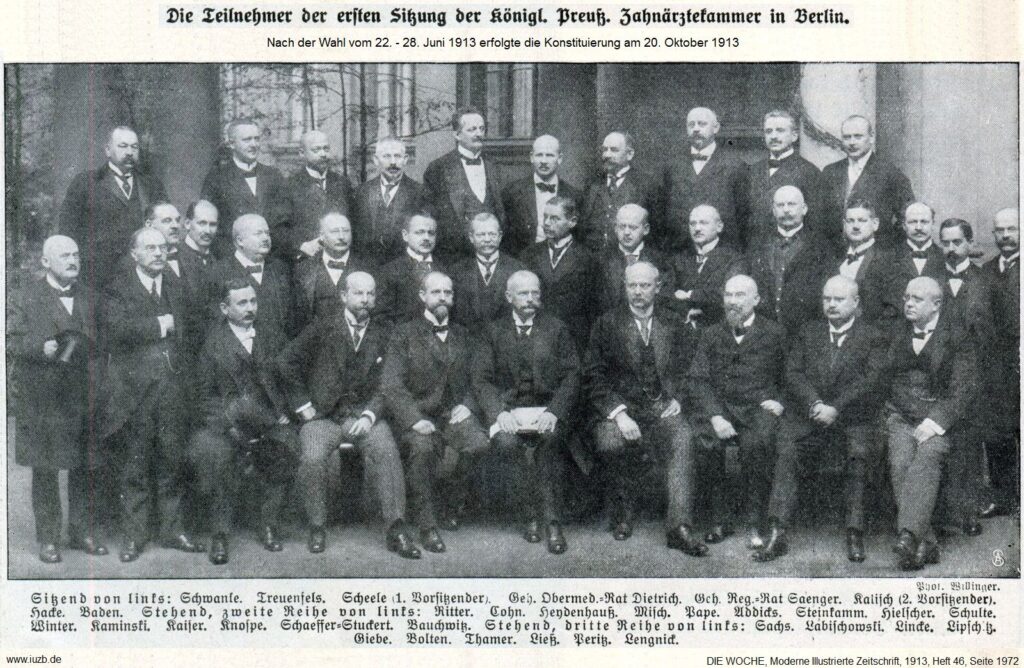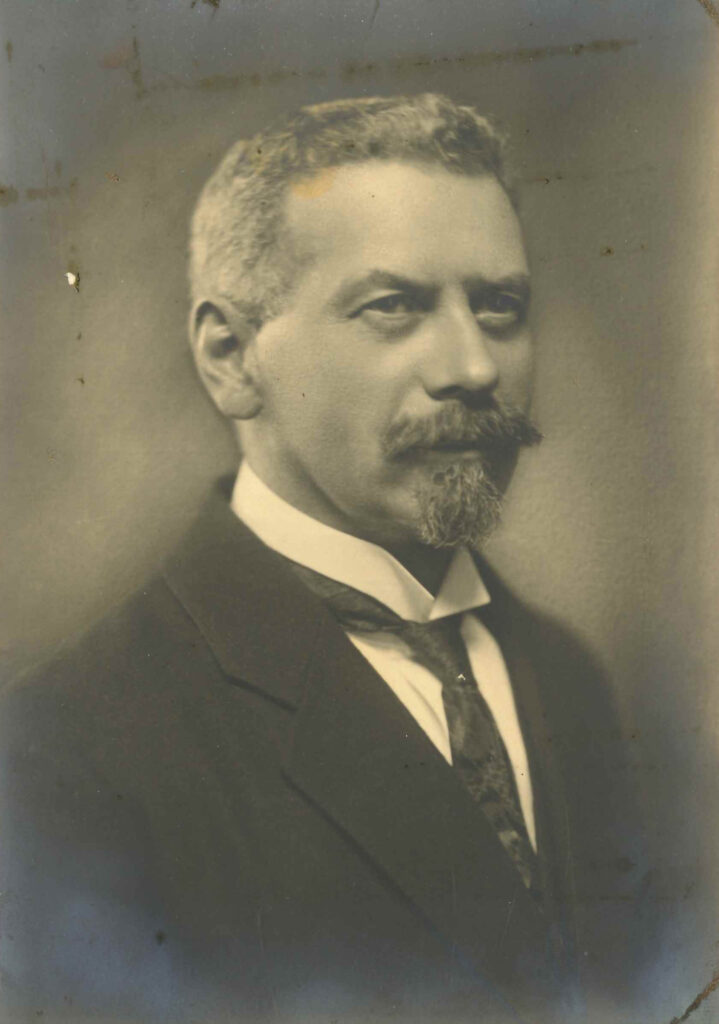Published on: 28 augustus, 2021
Last updated on: 15 september, 2025
Pedigree: Denys Goedhart –> Nadia Cohen –> Ilan Cohen –> Gerson Cohen –> Ludwig Cohn –> Konrad Cohn
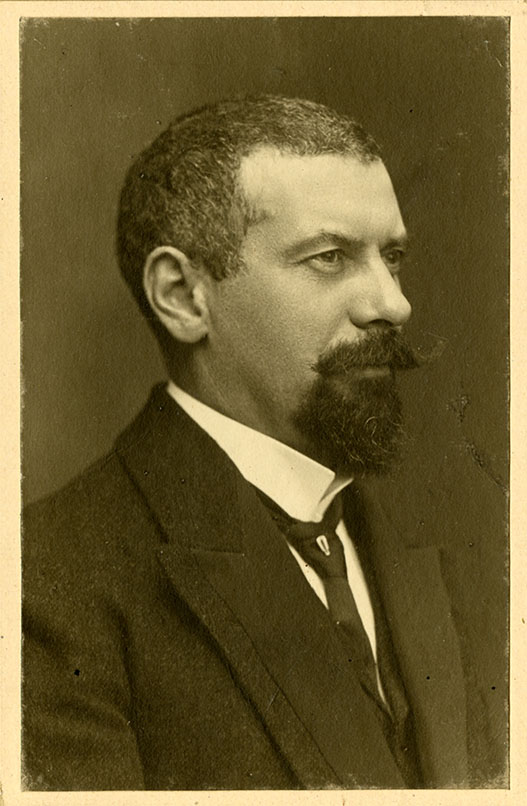
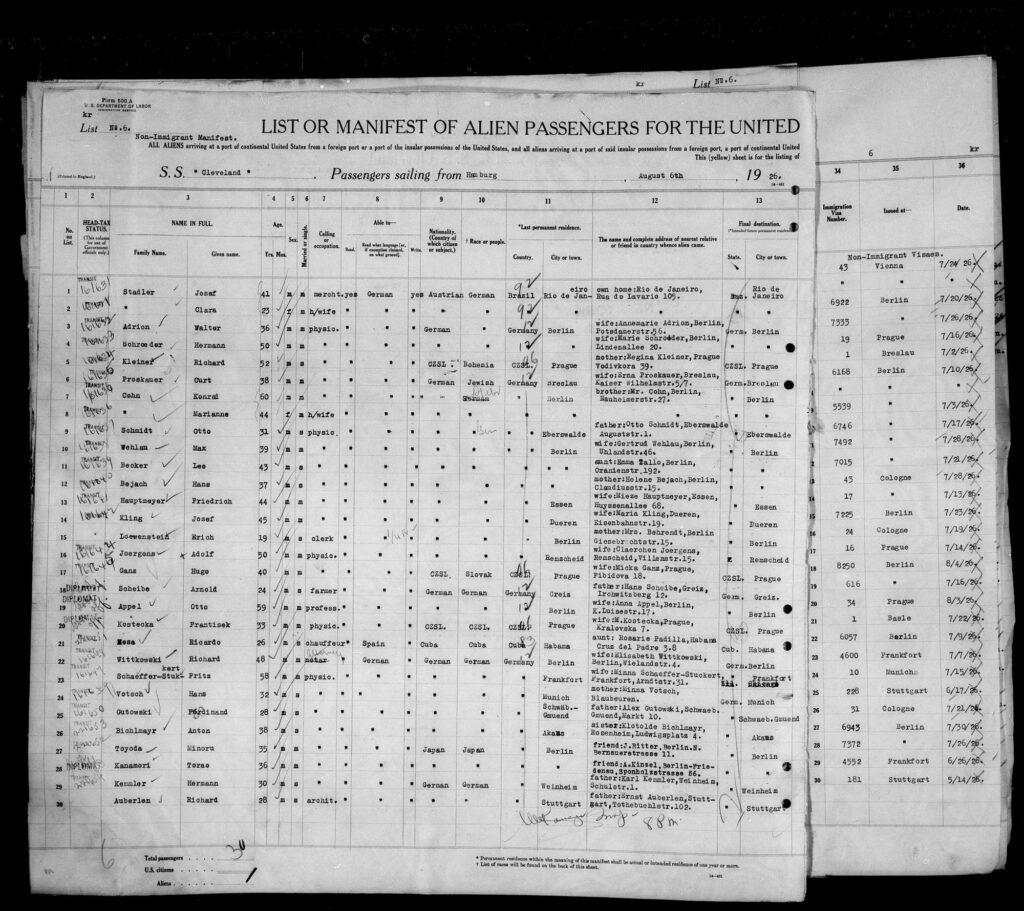
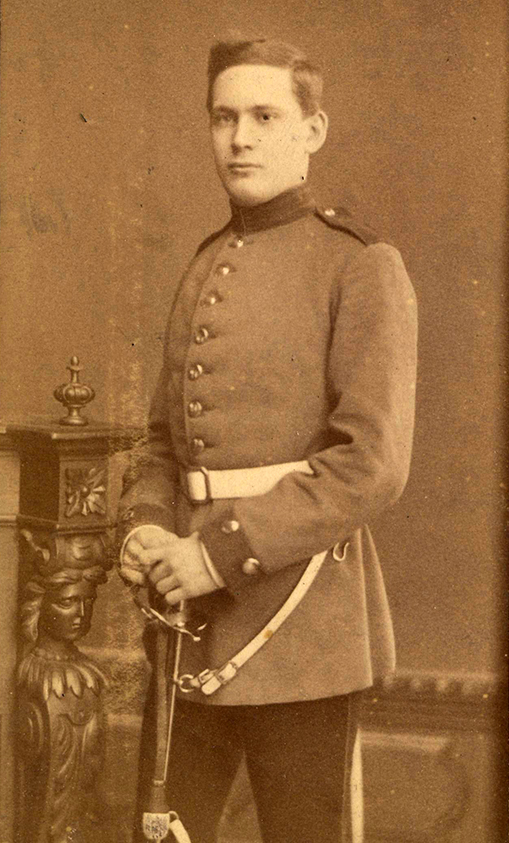

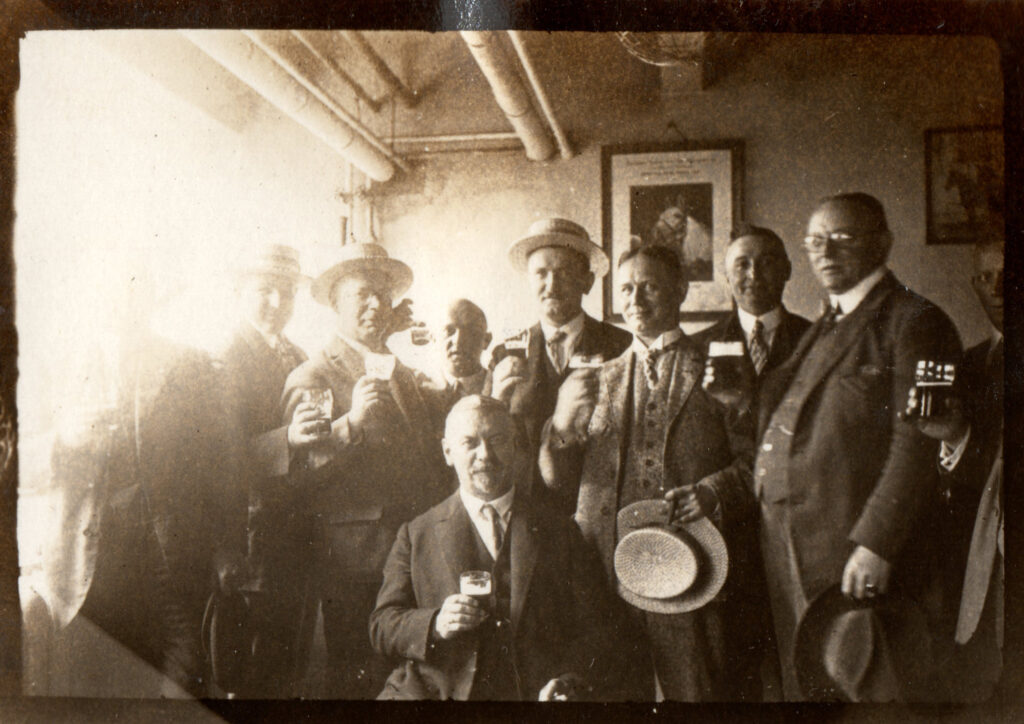
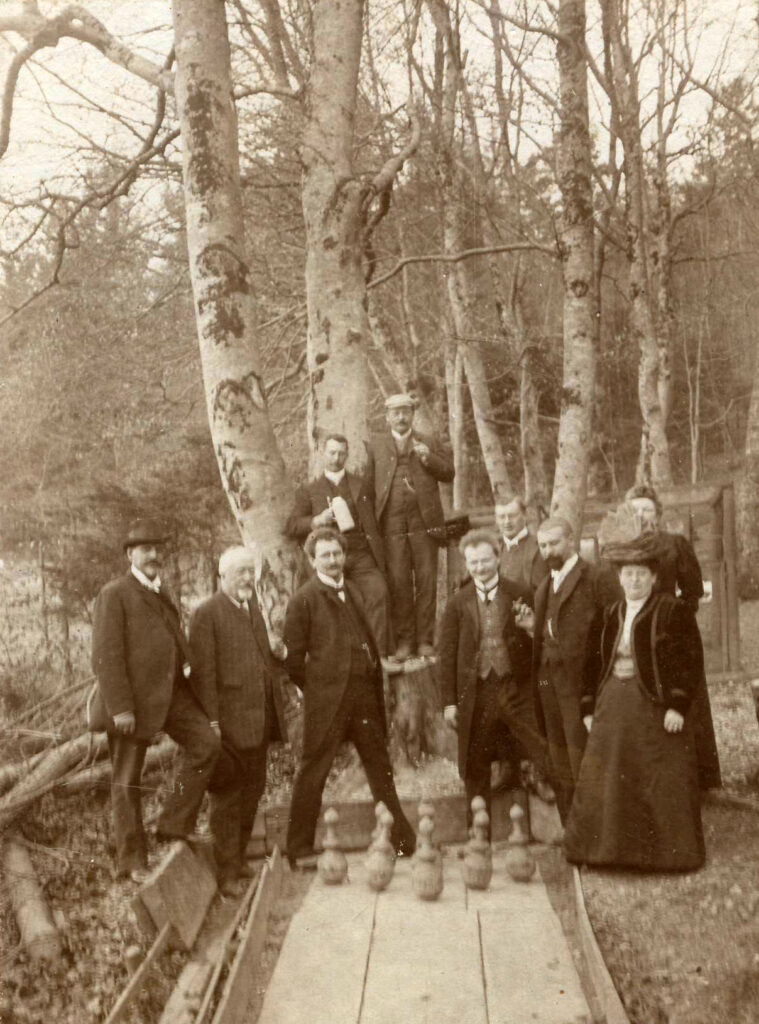
Son of Marcus Cohn and Johanna Citron . Born on 24 February 1866 in Samotschin, Posen (now Szamocin, Poland) by the name of Chaskel Cohn. In his daily life he was known under the name of Konrad Cohn. It was common during that time that children of Jewish families that had a Hebrew name also got a more German name.
Konrad was the youngest in the family and had six siblings. Three sisters and three brothers. After an investigation performed by the “Center Judaicum Foundation” in Berlin in 2017 and 2018, it became clear that Konrad must have had three brothers. Ignatz Cohn, Max Cohn, and a third brother whose name unfortunately is unreadable. Yet a small biography of Konrad in the “Zahnärztliche Rundschau” magazine in 1926, in honor of his 60th birthday, states that Konrad had five siblings, which at that time only an older brother was alive as Lawyer and Notary in Berlin.
A passenger list in 1926 from New York, where Konrad was recorded together with his second wife Marianne, also states a brother by the name of “Mr. Cohn” including an address in Berlin. According to the Berlin address book of 1926, at that particular address someone named Moritz Cohn (Lawyer and Notary) lived there. Most probably Konrad’s third brother. After further investigation I have found a marriage record of Moritz Cohn confirming the same parents of Konrad, so Moritz indeed was a brother of Konrad.
We assume that Chaskel and Moritz were named after their two grandfathers. The father of their father Marcus was named Moritz Cohn and the father of their mother Johanna was named Chaskel Citron.
From Konrad’s will we know that he shared his practice with his nephew Benno Heymann. After investigating Benno and his parents, I have found out that his mother (Marie Heymann (nee Cohn)) was a sister of Konrad. Last year during a extensive research on Ancestry I found the remaining sisters of Konrad, named Emilie Cohn and Flora Cohn.
At the age of 27 Konrad Cohn married the 29-year-old Selma Citron on October 27, 1893 in Berlin. On February 2, 1895 they got a son and gave him the name of Ludwig. About 11 years later, on December 1, 1906 they got a daughter and gave her the name of Erna.
Selma died in Berlin on October 13, 1911. The cause is unkown.
After the death of his wife Selma, Konrad remarried a few years later, on 10 november 1923 at the age of 51 with the 36-year-old Marianne Rosenstein. From personal letters between Marianne, her sister Emma Ginsberg (born Rosenstein) and her mother Henrietta Rosenstein (born Mannheimer), I have found a letter from her niece Hilde Ginsberg (daughter of Emma) on October 5, 1923 congratulating Marianne on the engagement between her and Konrad. Hilde can not believe they will have a new uncle and cousin. We know Marianne and Konrad never had any children together, so I believe that Hilde is talking about Erna Cohn. Ludwig was already married and did not live in the family home at that time. The letters date from the years 1905-1933 and give a nice glimpse into the personal life of the Rosenstein family. Unfortunately Konrad’s personal life is not mentioned there.
Konrad was a very busy man professionaly and socially, besides his primary profession he was involved in numerous other initiatives and boards. In the little spare time he had, Konrad frequently visited places in the outdoor. He loved to walk in the mountains and woods together with his (professional) friends and family.
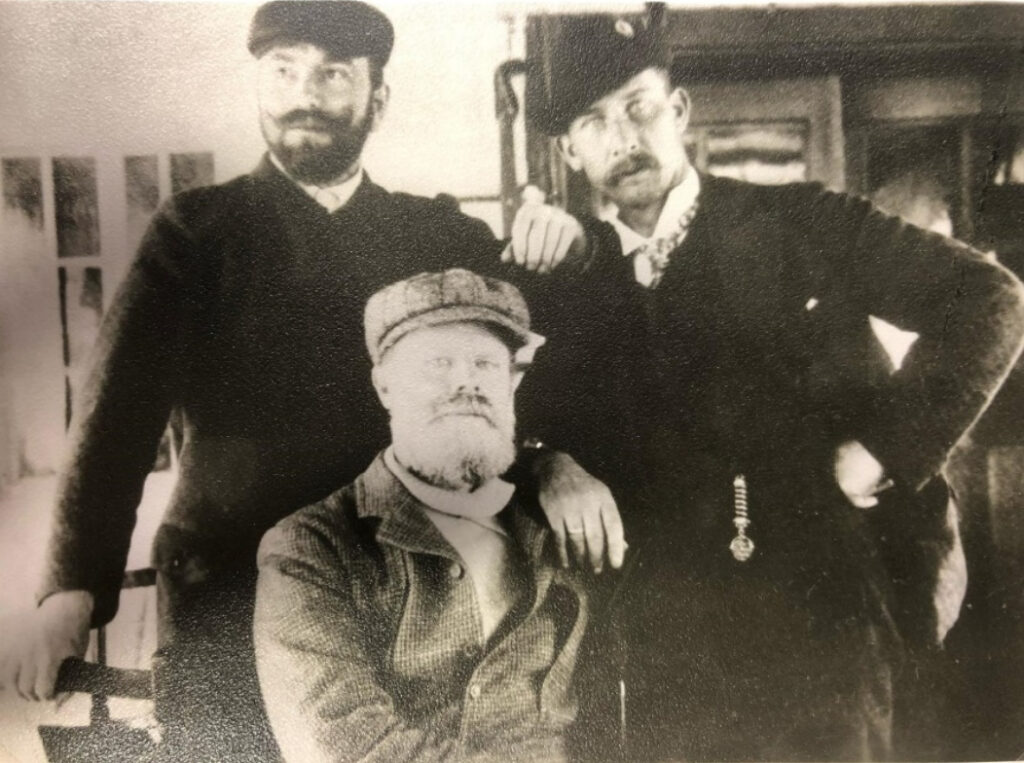
Origin
The Cohn-family originated in Samotschin, Posen, Prussia and relocated somewhere between 1866 and 1884 to Berlin. Konrad attended the Humboldts-gymnasium in Berlin in 1884.
Dentist & Lecturer
Konrad attended the Humboldts-Gymnasium in Berlin and after that studied Dentistry at the University of Berlin and graduated in february 1887. Almost immediatly he became a very successful practicing dentist with his own practice. After his graduation he went on with a ‘Doctor of Medicine’ study at the University of Bern in Switzerland. He was promoted in 1889 and from that moment got the official title “Dr. med.”. His dissertation can be found here.
As said Konrad had his own dental practice in the Kurfürstenstraße 101 in Berlin, which he shared with his nephew Dr. Benno Heymann and later with his son Ludwig, who also became a dentist.
In 1892 Konrad wrote a book on dentistry called “Kursus der Zahnheilkunde. Ein Hilfsbuch für Studierende und Zahnärzte”. The book contains a lot of information on Dentistry, but also includes information on medical issues related to dental healthcare. Think of diseases that may arise or fractures in the face. The first edition was published in 1892 and the sixth (and last official) edition in 1911. The book was re-issued in 2012 (ISBN 978-1273201905 ). His book was also added to the booklist of the Dentistry education program at the University of Berlin.
Konrad also published significant amount of articles (60+) for various Dental & Medical magazines like “Deutsche Zahnärztliches Wochenblatt”, “Correspondenz-blatt für Zahnärzte” and “Deutsche Monatsschrift für Zahnheilkunde” but also international magazines like “The Dental Review” or “Dental Cosmos”. A list of publications from the hands of Konrad can be found below.
Early 1890s Konrad was a member of the association that encourages free medical choice in Germany (“Vereins zur Eihnfurung freier Arztwahl”).
In addition to creating dental services in schools, Konrad represented the dental service in schools. He was a strong advocate of cooperation between the school dentists and governments to promote dental health. For this reason the German Central Committee for dental care in schools ( “Deutsche Zentral Komitee für Zahnpflege in the Schools”) was establishedin in Berlin on February 1, 1909. The Central Committee was aimed at preventing and combating caries and wanted to create a new consciousness about oral hygiene throughout Germany.
Konrad was General Secretary of this Committee and, together with his colleague Paul Ritter “most ardent promoter of the former Dental service in schools”. With his experience and skills Konrad brought representatives of the state, local governments, health insurance, social security and health and education together. With the work of the Central Committee, the social insurers saw that investing in dental services at schools was leading to a reduction in the number of dental procedures and therefore costs. The committee also focussed on creating awareness to the importance of lifelong dental care amongst children, but also amongst pregnant women and their suckling.
Before Konrad’s interest in the dental service in schools, he was a citizen-politician from 1898 to 1904 and became vice president of the Association of German dentists ( “Verein Deutscher Bund Zahnärzte ‘) from 1906-1910. From 1913 to 1923 he was Treasurer of the Central Association of German dentists (“Central-Verein Deutscher Zahnärzte”).
Summary memberships and directorships of Konrad:
| Period | Organization | Position |
| 1894-? | Vereins zur Eihnfurung freier Arztwahl | Chairman |
| 1906-1910 | Vereinsbund Deutscher Zahnärzte | Vice-chairman |
| 1897-1923 1913-1923 | Central-Verein Deutscher Zahnärzte | Member & Treasurer |
| 1909-1916 1917-1933 | Deutsche Zentralkomitee für Zahnpflege in den Schulen | Co-founder & Secretary General |
| Hilfsverein Deutsche Zahnärzte für Kriegsteilnehmer (former “Ausschuß Deutscher Zahnärzte für Kriegshilfe”) | Member of the board | |
| 1900-1919 | Landesausschusses für Zahnärztliche Fortbildung in Preußen | Editor & Vice-chairman |
| 1913-1933 | Preußischen Zahnärztekammer | Member of the board & Treasurer |
| Preußischen Landesgesundheitsamtes | Member | |
| 1900-1933 | Deutschen Nationalkomitees der F.D.I. | Member |
| 1906-1909 | V. Internationalen Zahnärztlichen Kongresses – Organisation-komitees und des Kongresses | Secretary |
| 1906-1909 | V. Internationalen Zahnärztlichen Kongresses – Berliner Lokal-Komitee | Member |
| 1906-1909 | V. Internationalen Zahnärztlichen Kongresses – Arbeits-komitee der I. Internationalen Ausstellung für Zahnheilkunde | Member |
| 1907-1910? | Komitee für zahnärztliche Fortbildungskurse | Secretary |
| 1914 | Sixth International Dental Congress London – Section X – Dental Education | Vice-chairman |
| 1931 | Committee to Administer Mr. Julius Rosenwald Million Dollar Fund | Member |
| 1926 | German Delegation to Dental Congress in Pennsylvania | Chairman |
| 1933-1938 | Beratungsstelle für Jüdische Zahnärzte | Chairman |
| 1924-1925 | The Review of Clinical Stomatology | Member of Advisory board |
Fédération Dentaire Internationale (FDI)
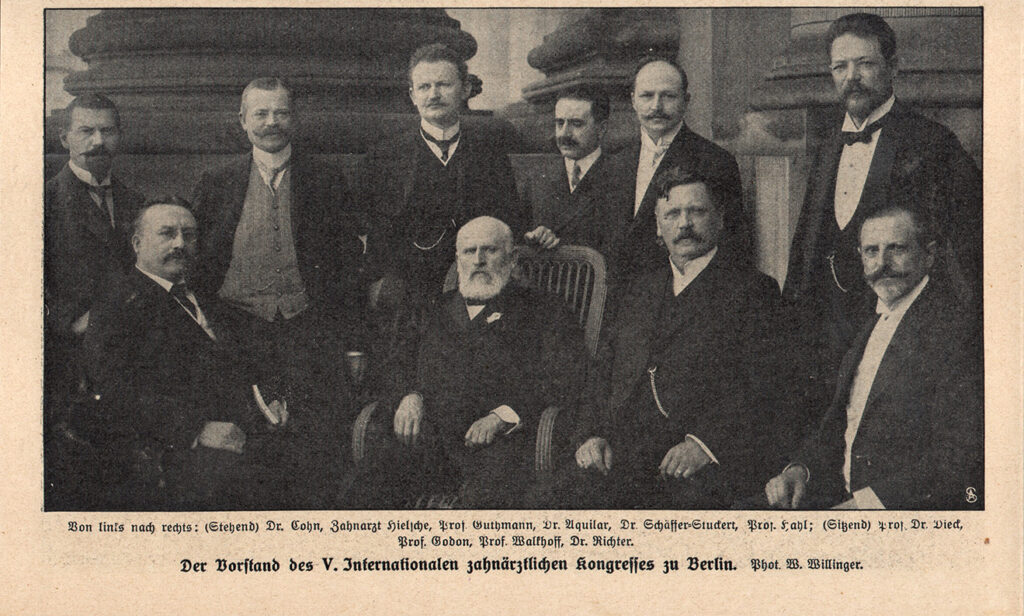
Left-to-right sitting: Vice-President (organisation): Prof. Dr. Dieck, Founder FDI: Prof. Godon, President (organisation): Prof. Walkhoff, President (local): Dr. Richter. [source: vm14]
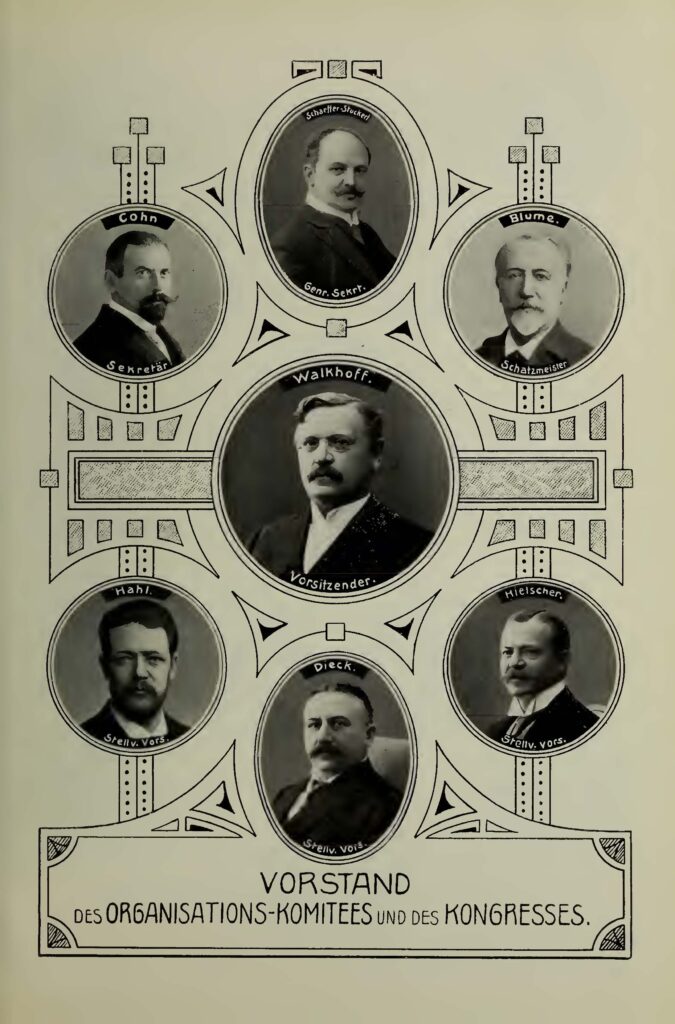

In 1900 in France, Professor Dr. Charles Godon formed an alliance called the Fédération Dentaire Internationale (FDI). An international alliance which represented the dental profession. FDI serves as thé main body for dentists from all over the world. Ensures development of dental policy, continuing education and training programs, and speaks as a unified voice for dentistry in international advocacy. FDI supports member associations with promotional activities of oral healthcare worldwide. FDI is one of the oldest international professional associations in the world.
Konrad was also a member of the FDI almost right from the start and also became a member of the German National Committee of FDI.
5th International Dentists Conference in Berlin
Announced by the FDI on December 4, 1906 the 5th International Dentists Conference would be held in Berlin in 1909. The Central Association of German Dentists received mandate from FDI to organize this event. The Central Association established an Organization committee in which Konrad was appointed as Secretary. He was responsible for all communication regarding the conference towards dentists all over the world and during the week of the conference, a daily newsletter was published in three languages German, English and French. Konrad was the editor of this newsletter. In 1909 the 5th International Dentists Conference took place from 22 to 28 of August in Berlin.
Besides this Konrad was also a member of two other committees, the “Local committee” and “Working Committee of the 1st International exhibition of dentistry”.
The 6th International Dentists Conference was held from 3rd to 8th of August 1914 in London. Konrad Cohn attended this congress as well, since we know he held a letcure about “Vorschläge über die Art statistischer Untersuchungen der Schulkinder.” (Suggestions on the nature of statistical studies of schoolchildren.) [vmXX]
In 1926 the 7th International Dentists Conference was held from 23 to 27 August in Philadelphia, United States. Were many dentists from all over the world attended. Similarly, Konrad with his wife Marianne traveled to the United States. A newspaper article from the US “The Brooklyn Daily Eagle” and a list of passengers from New York above confirm their presence.
Konrad was invited in honor of his 60th birthday, but also to attend a special dinner in honor of distinguished people from all of the world, which was organized by Dr. Truman William Brophy on August 13, 1926 in the Congress hotel in Chicago.
Because of this and the Conference, Konrad and Marianne decided to make a roadtrip through the US out of it.

in Congress Hotel Chicago” Konrad Cohn is sitting at the long table in the middle. Second left of the fold. Third left of the fold is Dr. Wilhelm Dieck and first left of the fold is Dr. Schaeffert-Stuckert [original here]
Another conference called “Fifteenth International Congress on Hygiene and Demography” was held in Washington from 23rd to 28th of September 1912. From the “list of congressists” [vm31] we know that Konrad also attended this conference and held a speach about “The preservation of the teeth in schools in Germany, and the work of the German Central Committee for dental hygiene.” which can be read in the transactions of the conference. [pub140]
WWII
Besides his many positions and his daily work as a dentist, Konrad together with Professor Wilhelm Dieck carried out scientific work and established a educational program of Dentistry at the University of Berlin.
In 1919 Konrad became teacher and lecturer at the University of Berlin in the field of Social Dentistry and teacher at the Academy of Social Medizin in Charlottenburg. In 1933 the NSDAP got absolute power in Germany. From then National Socialist ruled dictatorship. Which consisted mainly of anti-Semitism and restraints of the population. Jews weren’t allowed to practice any high ranked professions like doctors, dentists, surgeons, et cetera or attend any University studies. This was initiated immediately, all Jewish professors, teachers and students were immediately dismissed including the University of Berlin. Therefore Konrad was dismissed on May 12, 1933 as teacher and lecturer of Dentistry and he lost his license as a dentist. From 1934 he was not allowed to visit any foreign countries anymore.
After 1933 there were no more articles found from Konrad’s hand. However, in 1926, in honor of Konrad’s 60th birthday an short biography was found in the “Zahnartlichen Rundschau” and Konrad on his 70th birthday in 1936 was briefly mentioned in an article about anniversaries and another article in the Central-Vereins Zeiting. After his death in 1938 an obituary was found in the Jüdische Rundschau” and some small condolance articles in the Central-Vereins Zeitung and Jüdische Rundschau.
Konrad died on May 4, 1938 at the age of 72 in Berlin. His obituary stated that he died after a short but heavy sickness. An article in the student magazine “Die Bewegung” in 1938 had the headline “Das Ende des Dr. med. Cohn” possibly referring to the death of Konrad Cohn.
In honor of Konrad Cohn, the University of Berlin converted the old dental clinic in the Charité Mitte building into an auditorium and gave it the name “Konrad Cohn-hörsaal”.
Konrad’s wife Marianne collected every article and condolance letter she received and bundled it into a memoriam which can be found here.
Marianne Cohn (geb. Rosenstein)
After Konrad’s death and the pressure from the Nazis on the Jews, his wife Marianne decided to flee to Palestine (now Israel). She arrived there on March 9, 1939 and was given the nationality some years later on August 20, 1941. Her application for naturalization confirmed that she and Konrad did not had any children.
The sponsor of her naturalization was Dr. Joseph “Jupp” Treu, the husband of Erna Cohn, daughter of Konrad. Marianne stayed for quite some time at Jupp and Erna in Jerusalem.
In 1946 Marianne emigrated to South Africa, likely to be close to her sister Emma and her nieces Gertrud, Ruth and Hilde, her brother George and his wife and her other sister Lea and her husband, who all lived in South Africa.
Marianne never got married again, lived her remaining live in Johannesburg and died on 19 May 1952 in Johannesburg.
In a letter from December 13, 1946, addressed to Marianne from an old friend (FU Steinfeld), Erna was mentioned. Mr. Steinfeld stated that he saw Erna and “Jupp” from time to time. In addition, he asked Marianne that she must love them. He is convinced that they never meant anything bad. This may indicate a quarrel between Marianne and Erna.
Publications of Konrad Cohn:
Books, Dissertation and Magazines
Known Lectures
| Ref. | Description | Date | Location | Reference |
| [lec01] | “The results of the German Central Committee in the movement of Dental work in the schools of Germany” | 26 September 1912 2:00PM | Washington D.C. | Official program, XV International congress on hygiene and demography, Washington, D. C., September 23-28, 1912 |
| [lec02] | “The Social Significance of Dental Hygiene in the Schools of Germany” | 3 or 2 July 1925 8:30PM | Headquarters of Berlin Dental Association | The Review of Clinical Stomatology v.2 1925. pag 150 & The Journal of ophthalmology, otology and laryngology … c.1 v.29 1925 pag 241 |
Articles
References of Konrad Cohn:
Other sources:
https://de.wikipedia.org/wiki/Konrad_Cohn
We Survived: Fourteen Histories of the Hidden and Hunted in Nazi Germany (Dr. Konrad Cohn was mentioned to be part of the National Association of German Jews)
Men of Learning, Non-jews and Jews, Whom Nazis Fired – June 11th 1933
